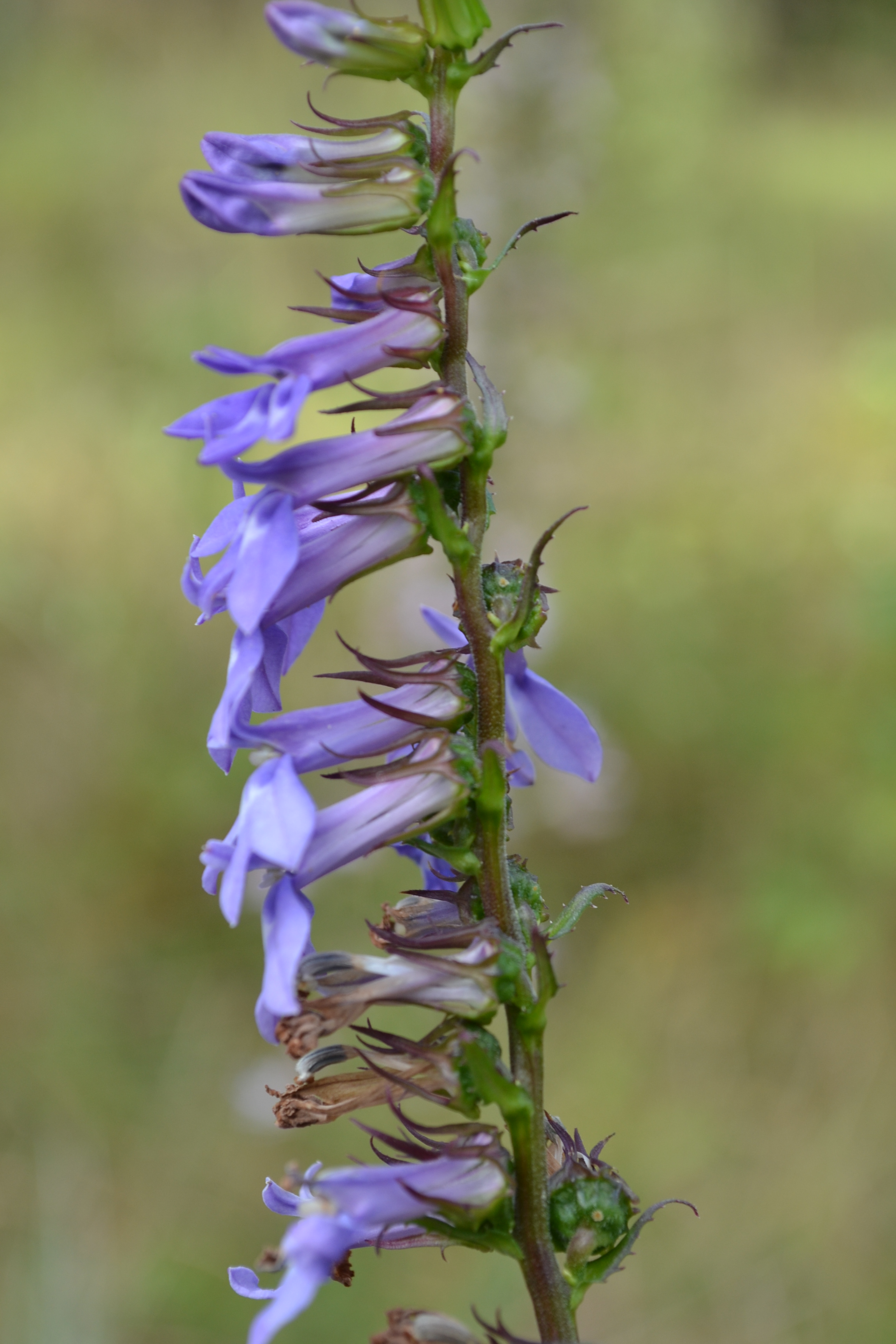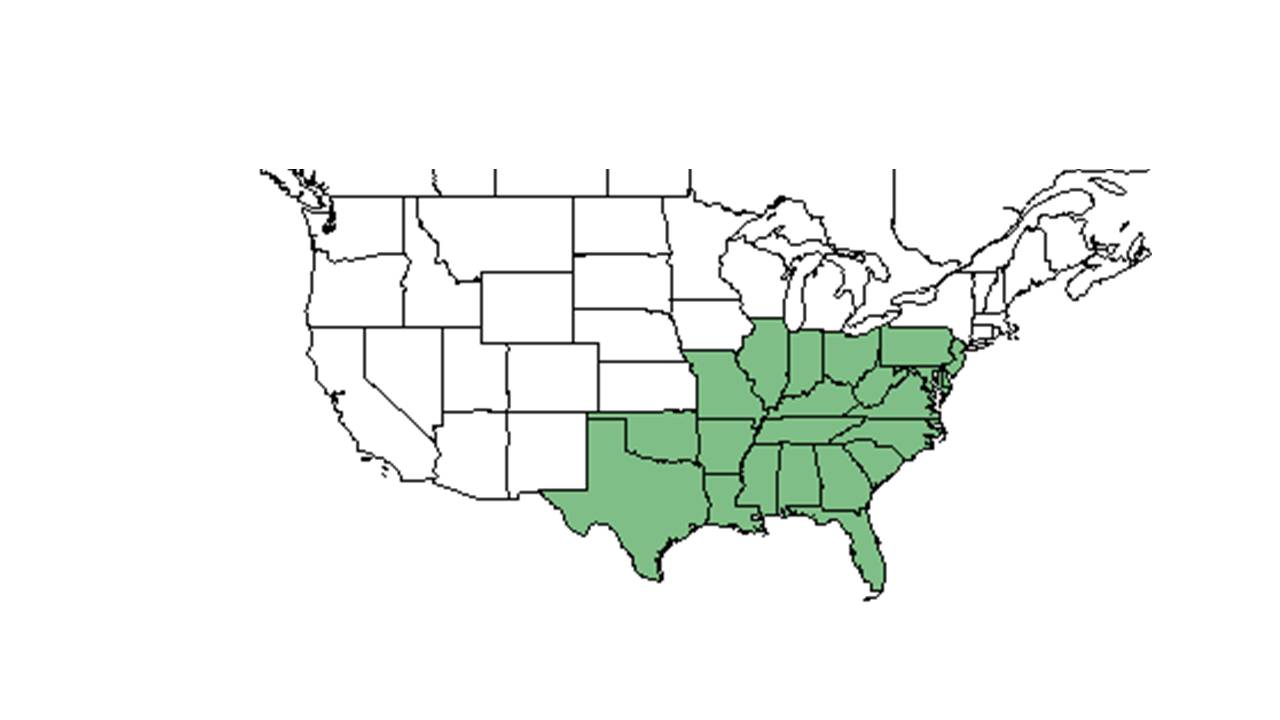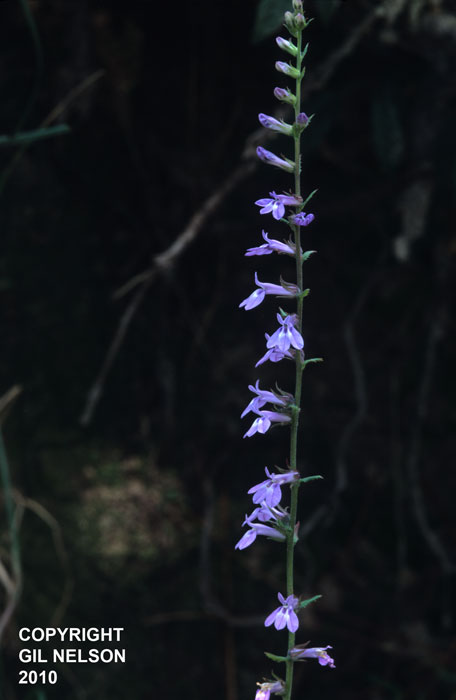Difference between revisions of "Lobelia puberula"
Krobertson (talk | contribs) |
|||
| Line 18: | Line 18: | ||
}} | }} | ||
| − | Common name: | + | Common name: Downy lobelia |
==Taxonomic notes== | ==Taxonomic notes== | ||
Synonyms: ''Lobelia puberula'' var. ''puberula''; ''L. puberula'' var. ''simulans'' Fernald; ''L. puberula'' var. ''mineolana'' F. Wimmer | Synonyms: ''Lobelia puberula'' var. ''puberula''; ''L. puberula'' var. ''simulans'' Fernald; ''L. puberula'' var. ''mineolana'' F. Wimmer | ||
Revision as of 16:01, 18 August 2016
| Lobelia puberula | |
|---|---|

| |
| Photo taken by Kevin Robertson | |
| Scientific classification | |
| Kingdom: | Plantae |
| Division: | Magnoliophyta - Flowering plants |
| Class: | Magnoliopsida – Dicotyledons |
| Order: | Campanulales |
| Family: | Campanulaceae |
| Genus: | Lobelia |
| Species: | L. puberula |
| Binomial name | |
| Lobelia puberula Michx. | |

| |
| Natural range of Lobelia puberula from USDA NRCS Plants Database. | |
Common name: Downy lobelia
Contents
Taxonomic notes
Synonyms: Lobelia puberula var. puberula; L. puberula var. simulans Fernald; L. puberula var. mineolana F. Wimmer
Description
"Perennial or annual herbs, stems erect, strict or freely branched. Leaves crenate, serrate or entire. Raceme terminal ,bracteate, often very leafy and the flowers appearing axillary. Calyx 5-lobed, more or less actinomorphic; corolla zygomorphic, fenestrate, 2-lipped, upper lip 2-lobbed, lower 3-lobbed. Stamens 5, completely united. Capsule dehiscent by apical pores. Seeds yellowish brown, tuberculate, oblong, 0.6-1 mm long." [1]
"Similar to L. elongata. Stems pubescent, at least near the base. Leaves elliptic, lanceolate or oblanceolate, 3-12 cm long, 1-4 cm wide. Calyx lobes lanceolate, rarely linear, 5-10 mm long, sometimes slightly auriculate, entire or with callous-tipped teeth; corolla tube 7-10 mm long; filament tube 5-8 mm long. Capsule 6-8 mm broad." [1]
Distribution
Ecology
Habitat
It is found in burned and unburned patches of degraded longleaf pine sandhill in the southeastern United States. [2] This species is also found in pine flatlands, boggy clearings, upland pine-oak woodlands, ravines, along limestone glades, and along riverbanks. [3] It can occur in dry, sandy soils, loamy soils, clays, and moist soils of wetlands in open to partial shaded areas. [3] L. puberula has also been found growing in human disturbed areas such as ditches and along roadsides. [3] Associated species include Pinus palutris, Quercus virginiana, Pinus echinata, Quercus falcata, Helianthus, Eupatorium, Agalinis, Liatris, Coreopsis gladiata, Juncus trigonocarpus, Scleria reticularis, Sphagnum, Pinus taeda, Aristida stricta, and Schoenus nigricans. [3]
Phenology
This species has been observed flowering and fruiting from August to December. [3]
Seed bank and germination
Several short-lived perennial forbs also have a seed bank persistent for at least several years. [4]
Fire ecology
This species thrives in areas that are burned. [3]
Conservation and management
Cultivation and restoration
Photo Gallery
References and notes
- ↑ 1.0 1.1 Radford, Albert E., Harry E. Ahles, and C. Ritchie Bell. Manual of the Vascular Flora of the Carolinas. 1964, 1968. The University of North Carolina Press. 1005-7. Print.
- ↑ Heuberger, K. A. and F. E. Putz (2003). "Fire in the suburbs: ecological impacts of prescribed fire in small remnants of longleaf pine (Pinus palustris) sandhill." Restoration Ecology 11: 72-81.
- ↑ 3.0 3.1 3.2 3.3 3.4 3.5 Florida State University Robert K. Godfrey Herbarium database. URL: http://herbarium.bio.fsu.edu. Last accessed: June 2014. Collectors: G. Knight, Loran C. Anderson, Robert K. Godfrey, Jean W. Wooten, James R. Burkhalter, R. Kral, S. W. Leonard, A. F. Clewell, D. B. Ward, E. S. Ford, Roy Komarek, S.C. Hood, . K. Craddock Burks, Gil Nelson, Angus Gholson, Wilson Baker, Ed Keppner, Lisa Keppner, Ann F. Johnson, R. A. Norris, Travis MacClendon, Karen MacClendon. States and Counties: Florida: Baxter, Calhoun, Clay, Escambia, Franklin, Gadsden, Gilchrist, Jackson, Jefferson, Leon, Liberty, Santa Rosa, Taylor, Wakulla, and Walton. Georgia: Grady and Thomas.
- ↑ Platt, W. J., S. M. Carr, et al. (2006). "Pine savanna overstorey influences on ground-cover biodiversity." Applied Vegetation Science 9: 37-50.
